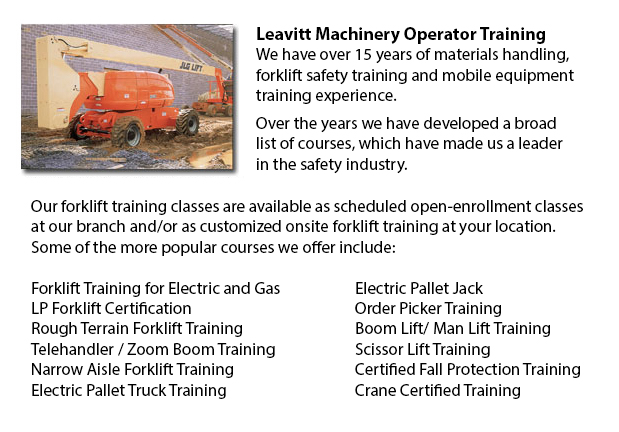
Aerial Platform Training British Columbia - Aerial hoists might be used to accomplish numerous distinctive tasks executed in hard to reach aerial spaces. Many of the duties associated with this type of jack include performing daily maintenance on structures with elevated ceilings, repairing telephone and utility lines, raising burdensome shelving units, and pruning tree branches. A ladder might also be used for many of the aforementioned jobs, although aerial hoists offer more safety and stability when correctly used.
There are many versions of aerial lifts accessible on the market depending on what the task required involves. Painters sometimes use scissor aerial jacks for instance, which are classified as mobile scaffolding, handy in painting trim and reaching the 2nd story and higher on buildings. The scissor aerial hoists use criss-cross braces to stretch and enlarge upwards. There is a platform attached to the top of the braces that rises simultaneously as the criss-cross braces elevate.
Container trucks and cherry pickers are a different type of aerial lift. They contain a bucket platform on top of a long arm. As this arm unfolds, the attached platform rises. Platform lifts utilize a pronged arm that rises upwards as the handle is moved. Boom lifts have a hydraulic arm which extends outward and raises the platform. All of these aerial platform lifts have need of special training to operate.
Training courses offered through Occupational Safety & Health Association, known also as OSHA, cover safety techniques, system operation, maintenance and inspection and device load capacities. Successful completion of these training programs earns a special certified license. Only properly certified individuals who have OSHA operating licenses should operate aerial lifts. The Occupational Safety & Health Organization has established rules to uphold safety and prevent injury when utilizing aerial lifts. Common sense rules such as not using this apparatus to give rides and making sure all tires on aerial lifts are braced so as to hinder machine tipping are mentioned within the guidelines.
Sadly, statistics reveal that greater than 20 aerial hoist operators pass away each year while operating and nearly ten percent of those are commercial painters. The bulk of these mishaps were triggered by improper tie bracing, therefore many of these may well have been prevented. Operators should make certain that all wheels are locked and braces as a critical security precaution to stop the instrument from toppling over.
Additional rules include marking the encircling area of the machine in an observable manner to safeguard passers-by and to guarantee they do not come too close to the operating machine. It is imperative to ensure that there are also 10 feet of clearance amid any electrical lines and the aerial hoist. Operators of this apparatus are also highly recommended to always wear the proper security harness while up in the air.
-
Warehouse Forklift Safety Training British Columbia
Warehouse Forklift Safety Training British Columbia - The corporation would face claims for liability when damage and injuries are sustained in an accident at the workplace. Warehouses can be a hazardous place to work for its workers, making employee... More -
Loader Operator Certification British Columbia
Loader Operator Certification British Columbia - Courses Offered For Getting Loader Operator Certification - Certification for forklifts are required to guarantee the safe operation of forklifts for those employers in industrial, warehouse or constru... More -
Crane / Overhead Crane / Self-Erect Crane / Truck Mounted Crane / Hydraulic Cranes Training in British Columbia
Bridge cranes or likewise called overhead cranes are actually a type of industrial material handling crane making use of a line and hook device that runs on a horizontal beam running along two widely separated rails. Numerous overhead cranes could be... More -
Scissor Lift License British Columbia
Scissor Lift License British Columbia - The operation of scissor lifts carries an inherent chance of danger. Whichever type of powered machine requires correct handling to prevent accidents causing injury or damage. Companies need to make certain tha... More -
Heavy Equipment Training Schools British Columbia
Heavy Equipment Training Schools British Columbia - There are a lot of heavy equipment training schools to select from. If you want to get to the best, it is important to check various aspects of the school in order to ascertain the level of educatio... More -
Telehandler Training British Columbia
Telehandler Training British Columbia - Telescopic handlers usually called telehandlers for short, are an extremely popular piece of heavy construction equipment. They are commonly utilized in the construction and agricultural trades. These machines... More -
Forklift Training Courses British Columbia
Forklift Training Courses British Columbia - When forklift operator safety training is tailored for illiteracy, training time is lessened by 50%. Forklift training certification, lift-truck operator driver safety training evaluation, and train the tr... More -
Heavy Equipment Operator Training British Columbia
Heavy Equipment Operator Training British Columbia - Heavy equipment operator training facilities which provide quality standards in the business, providing field performance work and added machinery training are highly sought after training features... More

Forklift Training British Columbia
TOLL FREE: 1-888-254-6157
forklifttrainingbritishcolumbia.com
Email Us
About Us


